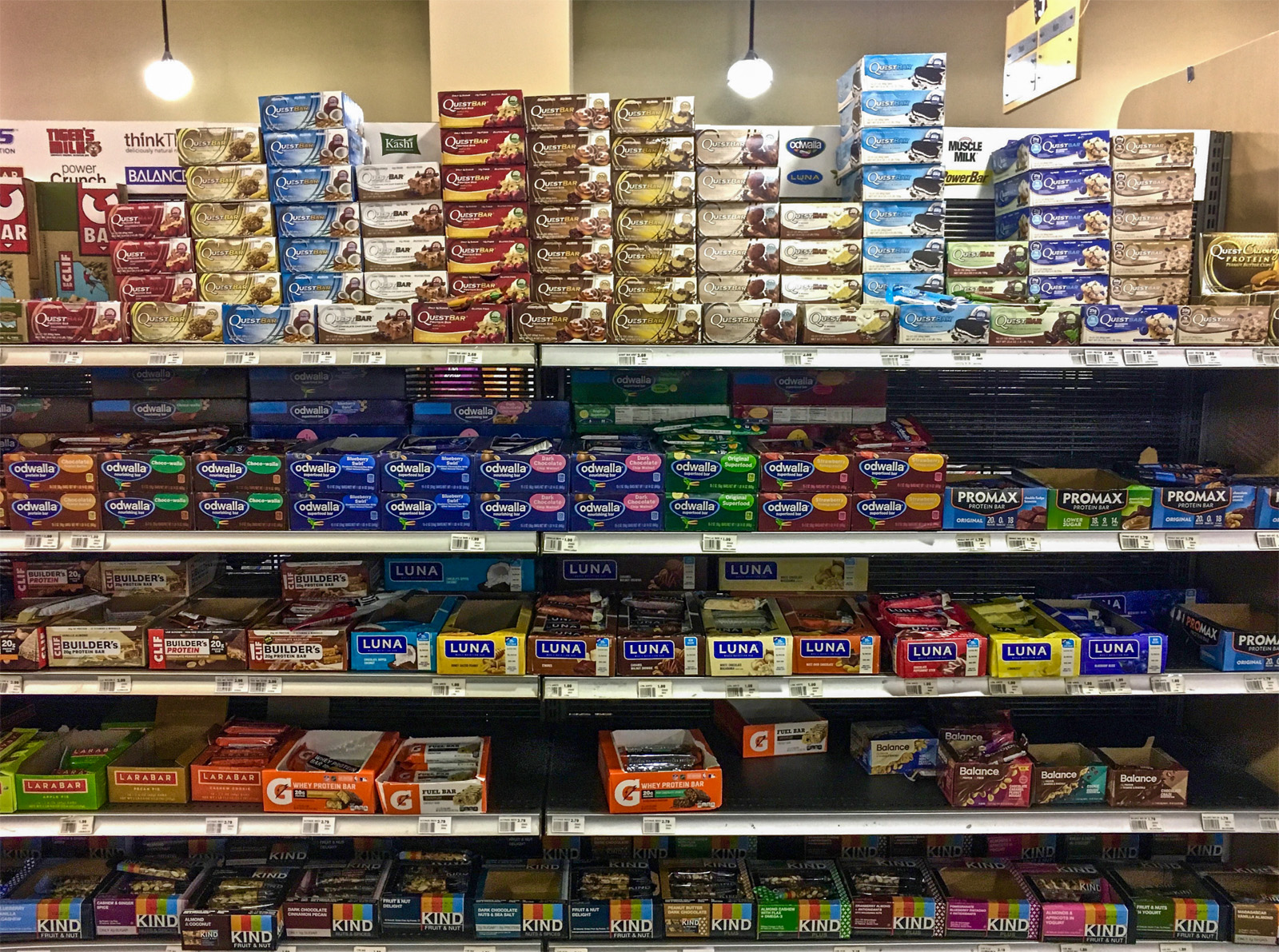The Quad: What’s the nutritional breakdown of your favorite protein bars?

Ackerman’s UCLA Store’s numerous protein bars contain varying amounts of sugar, protein and other artificial ingredients. (Giselle Abcarian/Daily Bruin)
By Giselle Abcarian
Jan. 24, 2017 4:10 p.m.
It’s 3:30 p.m. on a weekday and odds are, you’re starving. With lunch already digested and dinner a few too many hours away, a snack is crucial during this desperate hour, especially if you still have a couple more lectures to stay awake through.
But snacks can be a tricky ordeal, especially if you need them on-the-go. Apples and peanut butter are too messy, and chips and cookies too unhealthy, so what do you grab from your bag on the way to your next class? A protein bar, of course. Delicious and nutritious – or so you may think.
While protein bars may appear to be a healthy snack option, depending on the brand and the nutrition facts of your chosen bar, you may be better off eating a homemade cookie. At least you can pronounce the list of ingredients in those.
Take Quest Bars, for example. With flavors like vanilla almond crunch, cookies & cream, mint chocolate chunk and rocky road, it’s no wonder Quest Bars are at the top of Amazon’s best-sellers list in sports nutrition protein bars.
[Related: De Neve to introduce flexitarian bar, offer plant-based protein options]
Yet while high in protein and fiber, the chocolate chip cookie dough Quest Bar, which is their most popular flavor, also consists of ingredients such as erythritol and sucralose. Erythritol and sucralose are both zero-calorie sugar substitutes, which allow the company to keep their product’s calorie content on the lower side for a protein bar, at around 190 calories. While they are considered safe for consumption by the Food and Drug Administration, they can both cause bloating and gas, and may even lower the healthy bacteria levels in your gut.
If you’ve tried one protein bar in your lifetime, it was probably a Clif Bar. From its birth in 1992, Clif Bars have remained a top-selling product. It has since succeeded in expanding its audience by targeting women with Luna Bars and kids with CLIF Kid Zbar.
Though the standard Clif Bar only contains 11 grams of protein, about half as much as a Quest Bar, the Clif Builder’s Protein line offers 20 grams of protein per bar. And unlike Quest Bars, Clif Bars are made from mostly organic ingredients and sweetened with organic dried cane syrup instead of sugar substitutes, making them higher in calories, at around 280, but ultimately better for your health.
For the days that you don’t make it to the gym or aren’t looking for a protein boost, a Larabar is a great snack option. The company boasts minimally processed bars that have a short and recognizable ingredient list. Their chocolate chip cookie dough bar, for example, contains only cashews, dates, chocolate chips and sea salt. The bars have 210 calories and only four grams of protein, but with protein consumption in Western Europe and the United States at around twice the recommended daily intake, they make for a perfectly good afternoon pick-me-up.
If cookie and pie flavors seem a little too sweet, KIND Bars might be more your speed. Most of their flavors are a simple combination between fruits and nuts, such as blueberry cashew and honey roasted nuts with sea salt. Though low in protein, they are sweetened with whole ingredients like honey and sugar and sport a short and recognizable ingredient list.
So the next time you’re doing your grocery shopping and find yourself in the protein bar aisle, I urge you to consider the ingredient list as hard as you consider the flavor choice. Just because it is lower in calories or looks “healthy” doesn’t mean the bar is good for your body. You may think you’re walking away with a wholesome snack, but without a little research, you may actually be purchasing a package of chemicals, or just some glorified candy bars.

